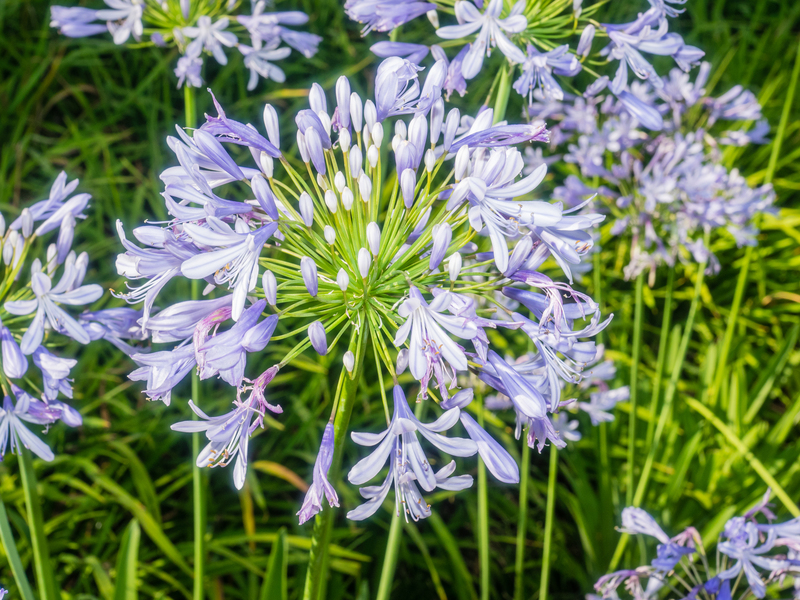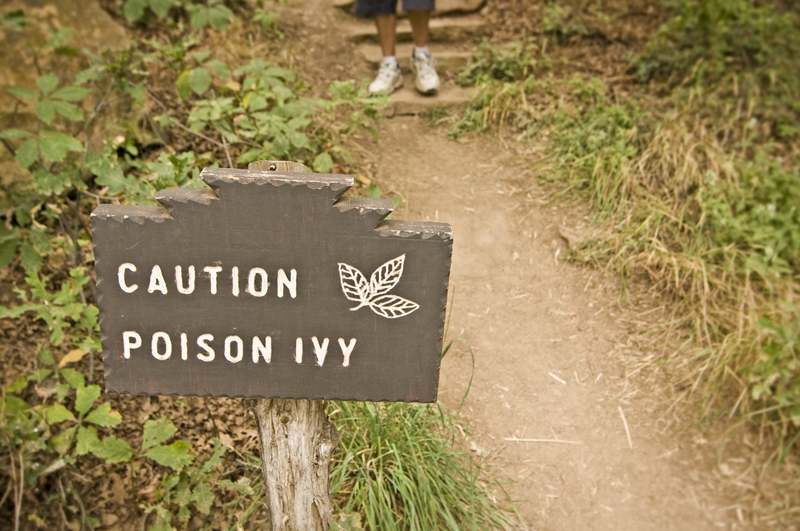Diving into the world of herb gardening for beginners
Posted on 30/08/2025
Diving into the World of Herb Gardening for Beginners
Embarking on your own herb gardening journey opens up a universe of fresh flavors, vibrant aromas, and rewarding experiences. Whether you have a sprawling backyard or a tiny windowsill, herb gardening for beginners can be tailored to fit any space or skill level. In this comprehensive guide, we'll explore everything you need to know about growing herbs, from picking the right supplies to harvesting and enjoying the fruits of your labor.

Why Start with Herb Gardening?
- Accessibility: Herbs are among the easiest plants to grow, requiring little space and basic care.
- Health Benefits: Fresh herbs pack a powerful punch of vitamins, minerals, and antioxidants.
- Cost-effectiveness: Growing your own saves money compared to buying bunches at the store.
- Flavor Enhancement: Homegrown herbs elevate dishes with robust, fresh flavors.
- Sensory Rewards: Experience the pleasure of fragrant leaves and soothing greenery at your fingertips.
If you're eager to explore the world of beginner herb gardening, read on for a step-by-step approach that will fuel your confidence--and maybe even your next meal!
Choosing the Best Herbs for Beginners
The secret to successful herb gardening for novice gardeners is starting with easy-to-grow varieties. Consider these popular choices:
- Basil: Great for warm climates and perfect in salads or pesto.
- Mint: Vigorous and refreshing; ideal for teas and desserts (best kept in pots).
- Chives: Hardy and flavorful for adding mild onion taste to dishes.
- Parsley: Versatile, can be grown in pots or the ground, and packed with Vitamin C.
- Cilantro: A staple in international cuisine, though it prefers cool seasons.
- Thyme: Drought-tolerant and excellent for seasoning meats and vegetables.
- Rosemary: Fragrant, woody herb that flourishes with minimal care.
- Dill: Perfect for pickling or as a garnish, grows quickly from seed.
Tips for Selecting Your First Herbs
Start with a few favorites you plan to use most often in your kitchen. For ease of care, consider herbs that share similar sunlight and watering needs. Local nurseries can advise which varieties do best in your region.
Essential Supplies for Herb Gardening
To get started with your indoor or outdoor herb garden, gather the following materials:
- Pots or containers (with drainage holes, if you're gardening inside or on a patio)
- High-quality potting soil (ensure it's well-draining and nutrient-rich)
- Seeds or starter plants (for a faster start, consider seedlings from a local garden center)
- Watering can or spray bottle
- Labels (to help you remember which herb is which at the early stages)
- Hand trowel and gloves (basic tools for transplanting and handling soil)
Optional Supplies
- Grow lights for areas with limited sunlight
- Fertilizer formulated for edible plants
- Mulch for outdoor beds to retain moisture
How to Start Your Herb Garden
Selecting the Right Location
Sunlight is key for healthy herbs. Most varieties need at least 6 hours of direct sunlight daily. For indoor herb gardens, south or west-facing windows are ideal. Outdoors, choose a spot with full morning sun and some afternoon shade if you live in a very hot climate.
Planting Herbs from Seeds vs. Seedlings
- Seeds: Cost-effective and offer a greater selection of varieties. They require patience since germination can take time!
- Seedlings: Convenient for beginners. These are young plants already started and ready to transplant for quicker results.
Steps to Plant Your Herbs
- Fill your pot or bed with potting soil. Make sure you leave at least 1 inch from the rim for watering.
- Sow seeds 1/4 inch deep, or transplant seedlings gently into the soil, covering their roots.
- Water thoroughly but gently after planting to help settle the soil around roots or seeds.
- Place containers in your chosen sunny spot and keep soil consistently moist, but never soggy.
- Label each herb to keep your garden organized and easy to identify as plants grow.
Spacing and Arrangement Tips
- Allow proper space between herbs for airflow (usually 6-12 inches, depending on the variety).
- Mix herbs with similar water and sunlight needs for healthier growth.
Caring for Your Herb Garden
Consistent care ensures lush, flavorful herbs. Here's what beginner herb gardeners need to know:
Watering Guidelines
- Check soil moisture regularly. Stick your finger an inch into the soil--water if it feels dry.
- Morning is the best time to water to avoid fungal diseases.
- Avoid overwatering, especially in pots--good drainage is crucial.
Feeding and Mulching Your Herbs
- Use a gentle organic fertilizer every 4-6 weeks during the growing season for healthy plants.
- Outdoor herbs benefit from a layer of mulch to keep roots cool and minimize weeds.
Pinching and Pruning
- Pinch off flowers as soon as they appear to encourage more leafy growth.
- Regularly harvest the top 1/3 of your herbs to promote bushier plants and extend your harvest season.
Common Challenges and How to Overcome Them
- Pests: Use natural remedies like neem oil or soapy water to manage insects.
- Fungal diseases: Ensure good air circulation and avoid watering leaves directly.
- Bolting: Herbs like cilantro and basil may "bolt" or flower in hot weather--try providing shade or pinch off flower shoots.
Harvesting and Using Your Herbs
Harvesting at the right time rewards you with the most aromatic and flavorful herbs.
How and When to Harvest
- Pick early in the morning when leaves contain peak oil content.
- Use sharp scissors or pinch stems just above a set of leaves to encourage regrowth.
- Don't harvest more than one-third of a plant at a time to allow it to keep growing.
Preserving Your Harvest
- Freezing: Chop herbs and store in airtight containers or freeze in oil or butter for use year-round.
- Drying: Bundle stems and hang upside down in a cool, dry area or use a dehydrator.
- Fresh Storage: Keep harvested herbs in a glass of water on your kitchen counter or in the fridge wrapped in a damp towel.
Creative Ways to Use Homegrown Herbs
With your own herb garden, the possibilities are endless! Try these ideas:
- Cooking: Brighten meals by adding freshly snipped basil, parsley, or thyme to pasta, soups, eggs, or grilled meats.
- Homemade teas: Steep mint or lemon balm leaves for a refreshing, calming drink.
- Herb-infused oils and vinegars: Enhance sauces and salads with DIY herbal condiments.
- Natural remedies: Use chamomile and lavender for calming sachets or homemade skincare.
- Garnishes and cocktails: Upgrade beverages and desserts with a fragrant sprig.
Tips for Success in Beginner Herb Gardening
- Start small: Choose 3-5 favorite herbs and add more as you gain confidence.
- Keep learning: Every herb has different needs; utilize gardening books, local extension services, and online communities.
- Observe daily: Catch problems early and enjoy the growth process, noticing changes in aroma, size, and color.
- Experiment: Try growing culinary, medicinal, and ornamental varieties once you are comfortable.
Common Mistakes to Avoid
- Overcrowding plants, which restricts airflow and encourages disease
- Inconsistent watering that causes stress for herbs
- Ignoring draining needs, leading to root rot in potted plants
- Using too much fertilizer, which can reduce flavor
- Harvesting incorrectly, weakening the plant

FAQs: Beginner's Guide to Herb Gardening
- Do herbs grow better indoors or outdoors?
- Many herbs adapt well to both settings. Indoors offers climate control and year-round growth; outdoors may yield more robust plants, especially in the warm season.
- How much light do herbs really need?
- Most culinary herbs thrive with 6-8 hours of direct sunlight. Supplement with grow lights in low-light indoor spaces.
- Can I grow herbs from kitchen scraps?
- Many can, including green onions, basil, and mint! Root cuttings in water, then transplant to soil.
- What's the easiest herb to start with?
- Mint or chives are among the most forgiving for first-time gardeners.
- How do I prevent herbs from bolting?
- Harvest regularly and keep herbs cool during hot seasons by providing shade or moving containers as needed.
Conclusion: Cultivate Your Own Herb Haven!
Diving into the world of herb gardening for beginners is a delightful, nutritious, and sustainable way to enrich your home and kitchen. With careful selection, a touch of patience, and the guidance in this guide, anyone can nurture lush herbs for culinary, medicinal, or ornamental purposes. Not only will you elevate your meals with fresh-picked flavor, but you'll foster a deeper connection to the rhythms of nature--one fragrant leaf at a time.
Start your herb garden today, and enjoy the journey from seed to savor. Happy gardening!

